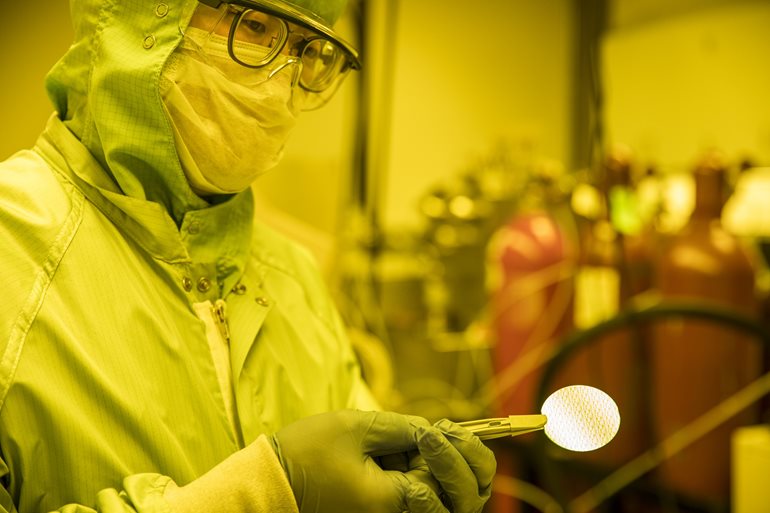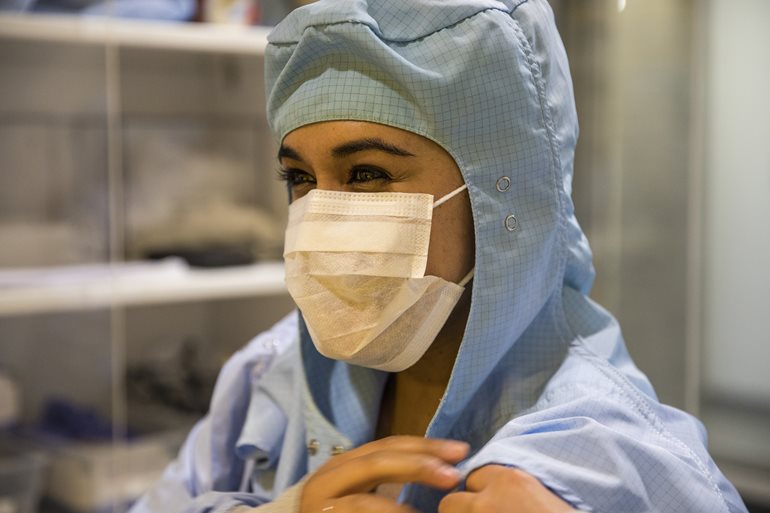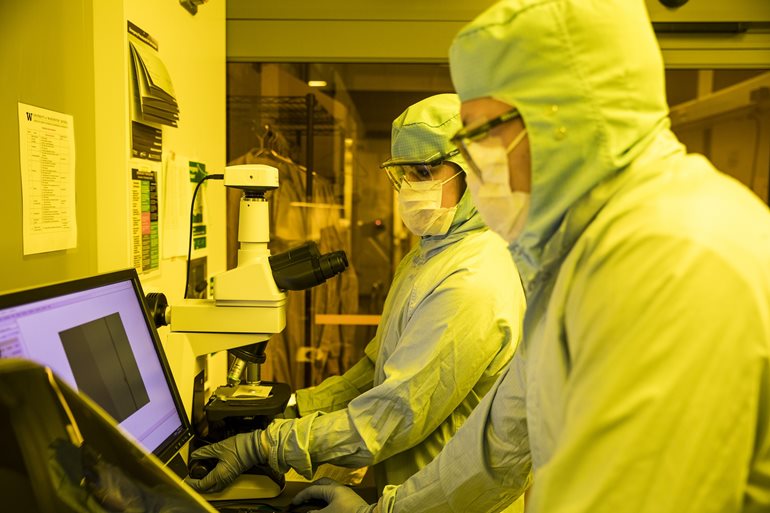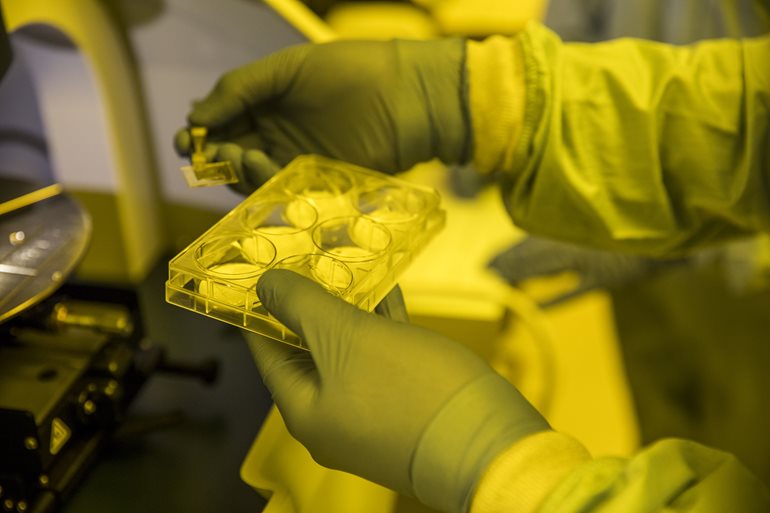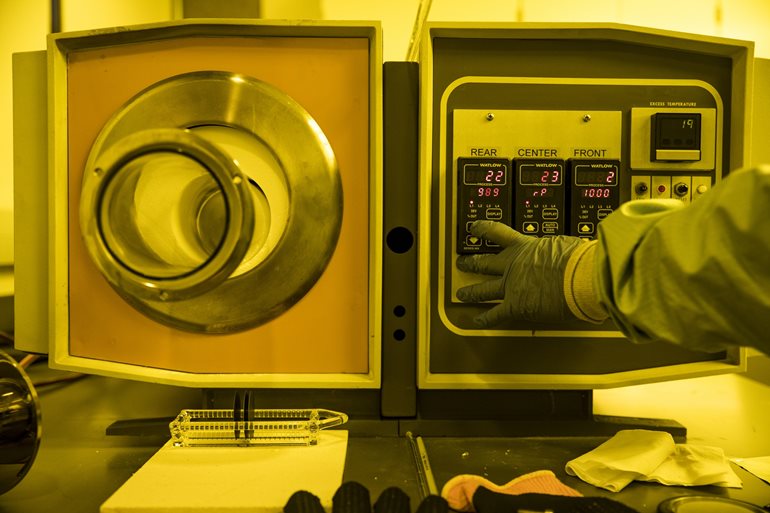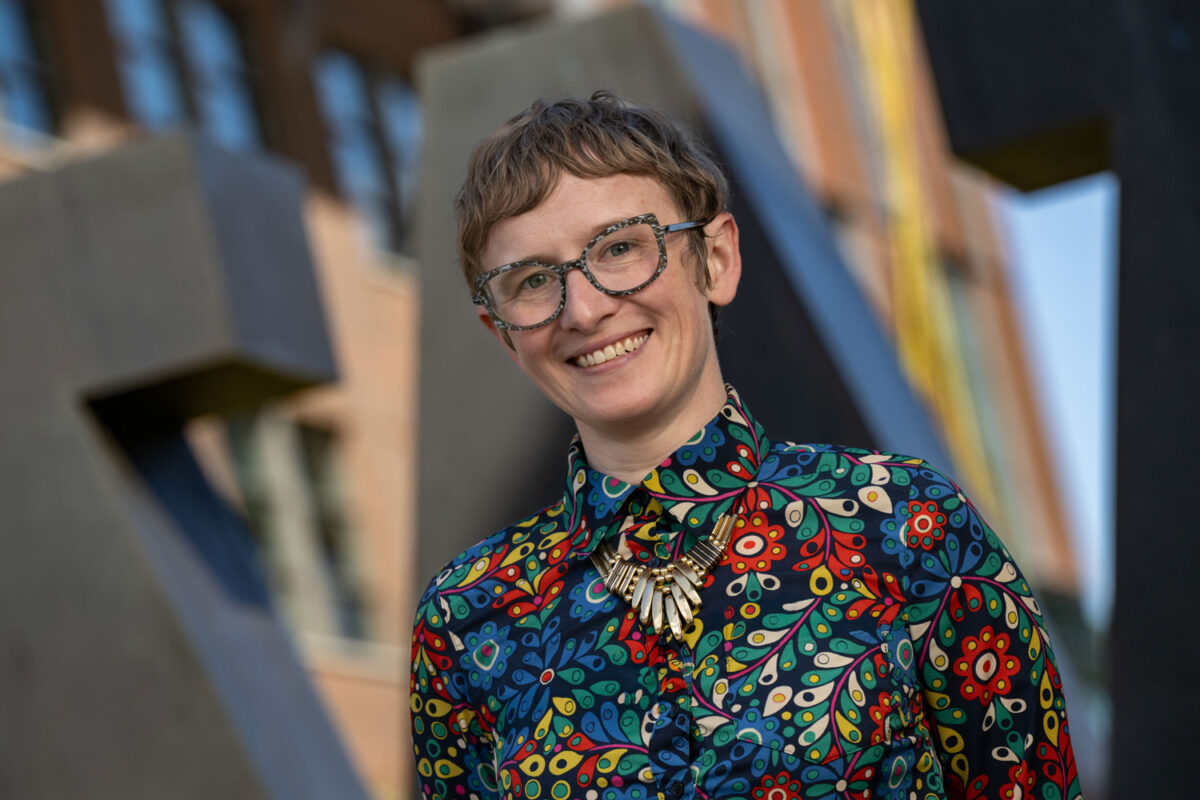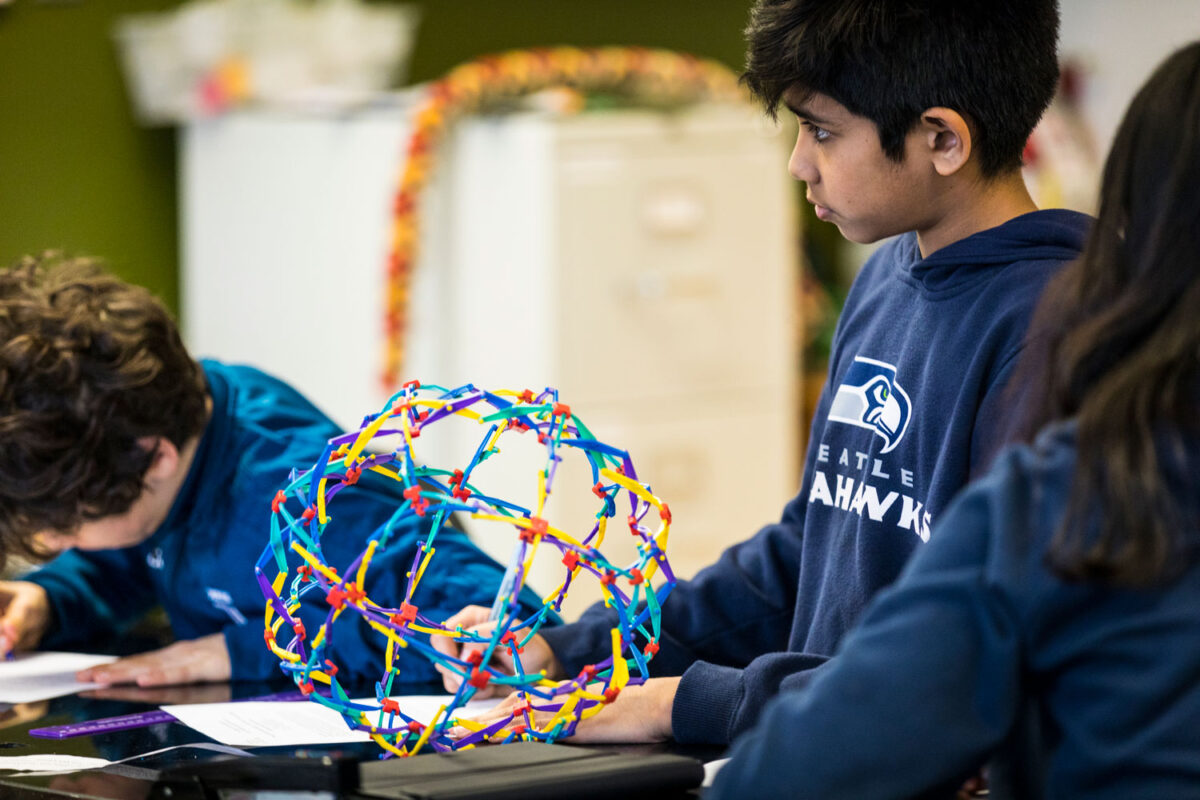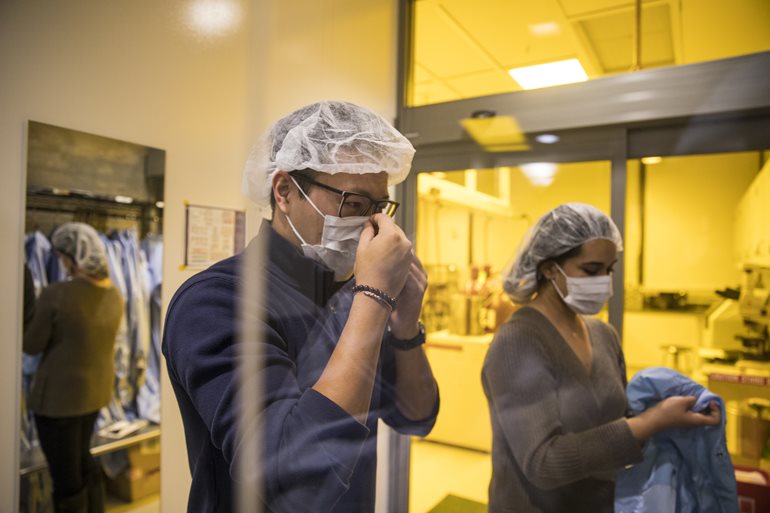
By Douglas Esser
The clean room in Discovery Hall glows with a yellow light. Skilled researchers enter through an air lock where they put on blue “moon suits” with booties, gloves, masks and goggles to prevent contamination from loose hair or skin flakes. It’s an eerie scientific sight.
Let’s look behind the masks to see who was using the room one day in mid-November at the University of Washington Bothell. First inside was Kyoung-Tae Kim, aka, “KT” Kim, a materials scientist and clean room coordinator. He literally keeps the facility humming.
The clean room is continually sucked free of dust as air blows through HEPA filters. As a Class 10,000 clean room, the room must contain fewer than 10,000 particles measuring 0.5 microns or more in a cubic foot of air. A micron is one-millionth of a meter. Dust and pollen are about 10 microns wide. Unfiltered air typically has about a million particles of that size in a cubic foot of air.
Kim said faculty and student researchers in the School of Science, Technology, Engineering & Mathematics (STEM) use equipment in the room for manufacturing various electrical-mechanical devices in micro size such as solar cells, sensors, actuators and microelectromechanical systems (MEMS). That work could be ruined by a particle in the wrong place. The light in the room is yellow because that color doesn’t interfere with the photo-sensitive process used to print circuits on silicon wafers.
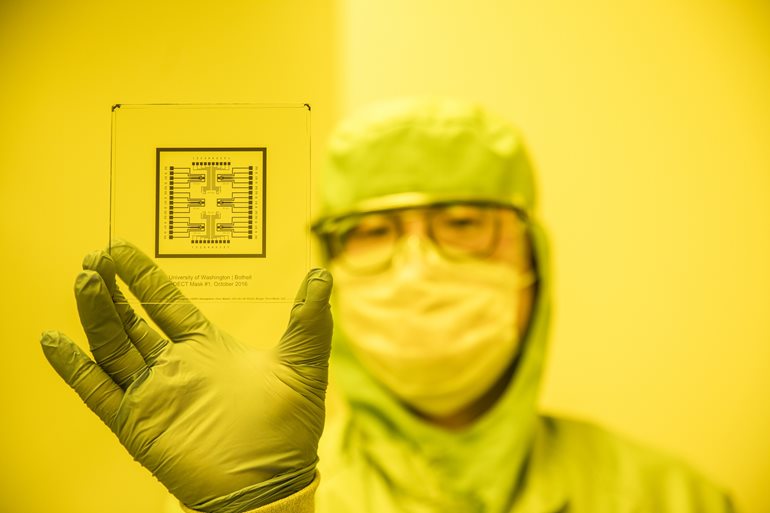
Behind another mask is Malia Steward, who has become quite familiar with the Discovery Hall facilities. A summer 2018 graduate with a Master of Science in Electrical Engineering, Steward has begun a UW doctorate program in Mechanical Engineering under a National Science Foundation fellowship. She is continuing research she began as an assistant to Seungkeun Choi, an associate professor in the School of STEM who studies organic solar cells.
“Right now, I’m trying to improve the light-trapping performance with a wrinkle surface — a textured surface — to increase efficiency,” Steward said.
The last masked researcher is Thu Yein, a senior in Mechanical Engineering who also works in the scanning electron microscope (SEM) lab under Choi’s supervision. The SEM strengthens research projects conducted through the clean room.
Yein explained that some samples going under the SEM that don’t conduct electricity have to be coated with a thin layer of a good conductor — gold. He uses equipment in the clean room to measure the thickness of the sample. It’s a matter of microns.
A clean room is rare in most universities the size of UW Bothell, but it’s something STEM faculty expected when Discovery Hall was built. Because of its complexity and expense — around $1 million — the clean room opened in March 2015, several months after the building.
Now, Kim said, someone uses the clean room every day.
Inside the clean room:
